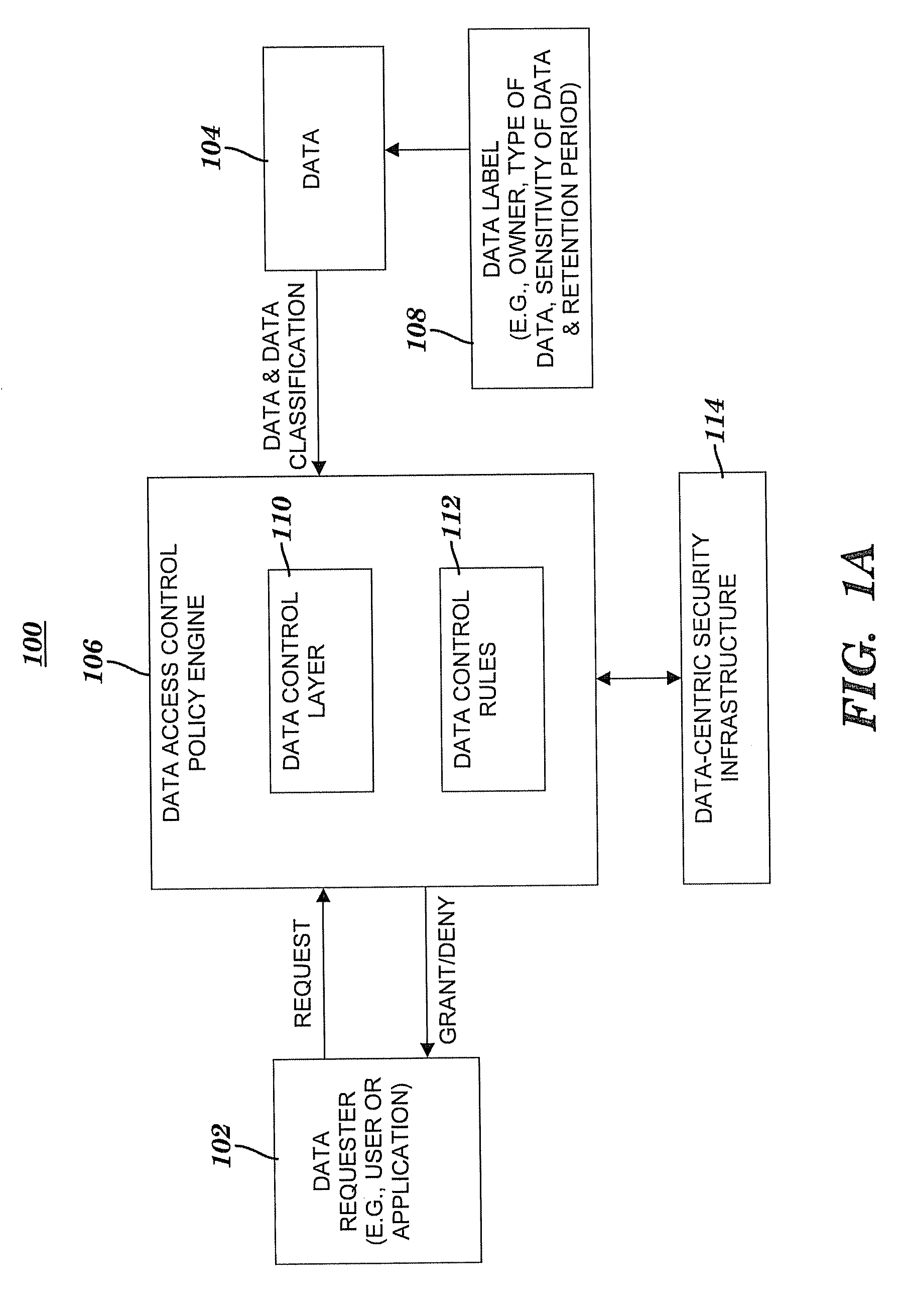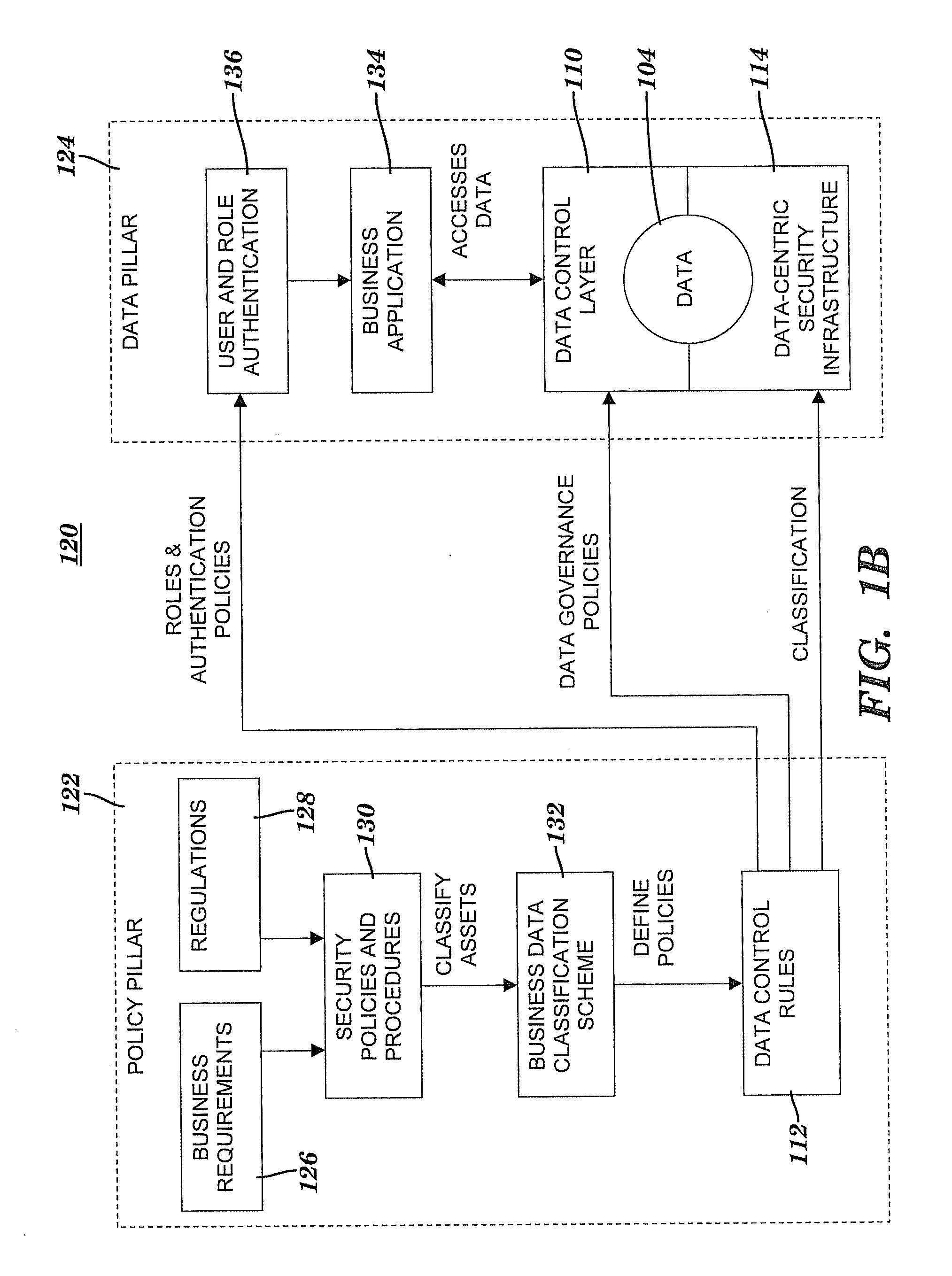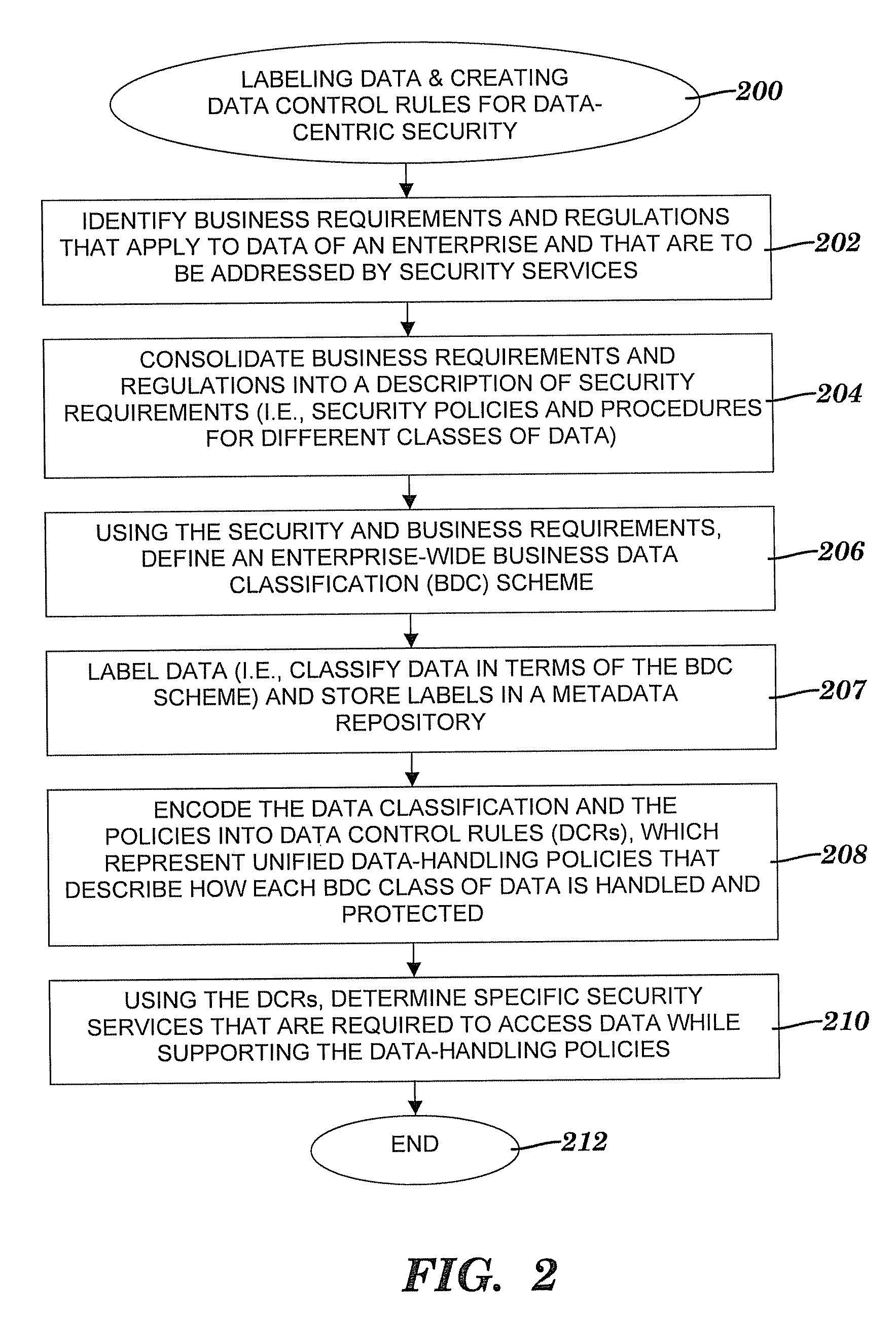Method and system for controlling access to data via a data-centric security model
a data-centric security and data technology, applied in the field of data-centric security models, can solve the problems of high cost, high cost, and high cost of many enterprises, and achieve the effects of cost saving, cost-effectiveness, and effective collaboration
- Summary
- Abstract
- Description
- Claims
- Application Information
AI Technical Summary
Benefits of technology
Problems solved by technology
Method used
Image
Examples
Embodiment Construction
1 Overview
[0019]The present invention provides a data-centric security model (DCSM) for data access and lifecycle data management. The DCSM provides an enterprise with the ability to (1) adequately distill and organize voluminous amounts of raw data into the information and knowledge that is necessary for business action; (2) efficiently understand and classify the contents of the enterprise's data, and measure and resolve security deficiencies; (3) properly control, monitor, and audit access to the data; and (4) implement and validate security safeguards in a manner commensurate with actual business risk and data value. The DCSM drives information technology (IT) security controls from a business requirements perspective by separating access control policies and data classification from data protection. For each class of data of an enterprise, the DCSM defines appropriate data security controls that reflect the business requirements that have been identified by the enterprise. Furt...
PUM
 Login to View More
Login to View More Abstract
Description
Claims
Application Information
 Login to View More
Login to View More - R&D
- Intellectual Property
- Life Sciences
- Materials
- Tech Scout
- Unparalleled Data Quality
- Higher Quality Content
- 60% Fewer Hallucinations
Browse by: Latest US Patents, China's latest patents, Technical Efficacy Thesaurus, Application Domain, Technology Topic, Popular Technical Reports.
© 2025 PatSnap. All rights reserved.Legal|Privacy policy|Modern Slavery Act Transparency Statement|Sitemap|About US| Contact US: help@patsnap.com



